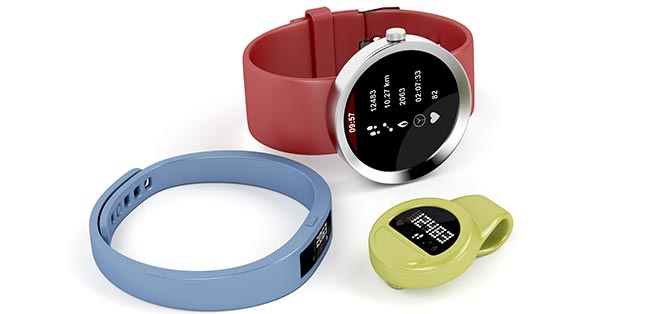
Jun 10, 2020
Blog Life Sciences , Digital World Fitness Wearables: Trends You Need To Know
When you think of wearable medical devices, what comes to mind? My guess is either Fitbit, Apple Watch, or both. And you’d be right. These fall into a sub-category of the wearable medical devices: fitness wearables. And with the advancements of some pretty cool technology, the fitness wearables market is developing into something far more intriguing.
Positioned at the intersection of a medical device and a lifestyle statement, fitness wearables range from simple step trackers to a data driven interconnected ecosystem that sits on your wrist (or ring, or arm, etc.). They work to optimize the three main areas of health and fitness: staying active, eating well and proper recovery. Ultimately, the goal of fitness wearables is to help safeguard users against potential health challenges by allowing us to be proactive in creating a healthier lifestyle.
The fitness wearable segment has experienced a massive boom over the last decade, and it doesn’t seem to be slowing down. The reason for the evolution is simple. New advancements in technology and new industry leaders mean that more innovative ideas are penetrating the market.
While Fitbit is one of the most well-known fitness wearables, there are, in fact, wearables of all kinds, and they are all becoming more and more sophisticated. Wearables are now available in the forms of:
Fitness Wearables Market Trends and Projections
The health and fitness tracking market has grown by leaps and bounds despite some challenges and headwinds. As preventative and personalized care gain popularity, wearable technologies that support behavioral changes in patients and influence positive lifestyle changes—like health and fitness trackers—will be in high demand.
For additional intel into the global market for medical devices and fitness wearables, download a free overview of our report, Wearable Medical Devices: Technologies and Global Markets.
Clara Mouawad is the content writer at BCC Research. She contributes to our blog, social media, email marketing and more.
In today’s fast-paced biomedical world, researchers and pharmaceutical companies...

Radiopharmaceuticals represent a cutting-edge frontier in modern medicine, offer...

Implantable Remote Patient Monitoring (IRPM) devices are revolutionizing healthc...

We are your trusted research partner, providing actionable insights and custom consulting across life sciences, advanced materials, and technology. Allow BCC Research to nurture your smartest business decisions today, tomorrow, and beyond.
Contact UsBCC Research provides objective, unbiased measurement and assessment of market opportunities with detailed market research reports. Our experienced industry analysts assess growth opportunities, market sizing, technologies, applications, supply chains and companies with the singular goal of helping you make informed business decisions, free of noise and hype.